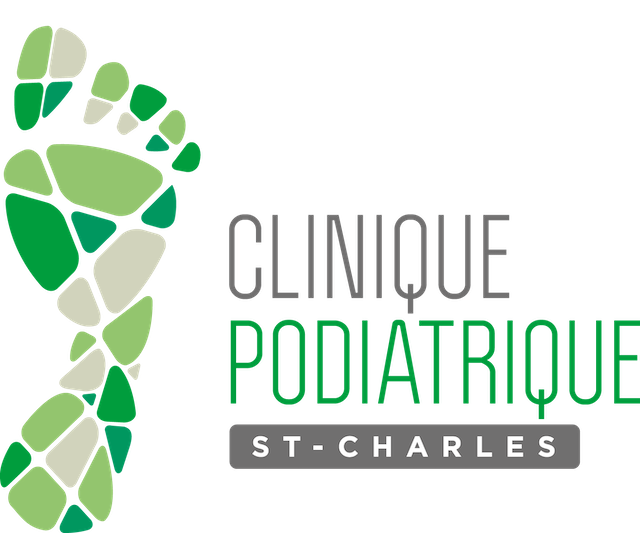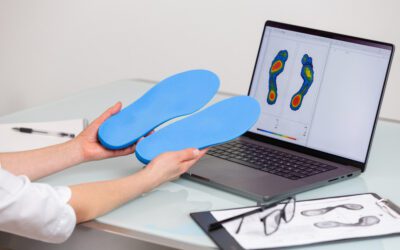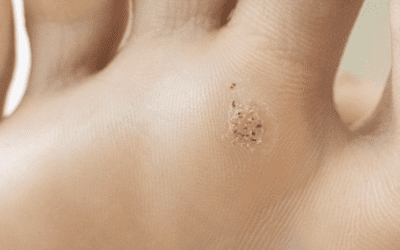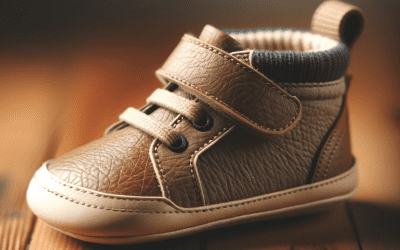When discussing podiatric issues, the terms “mallet toe” and “hammertoe” often come up, yet their meanings and implications remain unclear to many. These conditions, while seemingly similar, stem from distinct abnormalities in foot anatomy. The history of these pathologies dates back centuries, highlighting their prevalence and impact on foot health. Exploring their origins and anatomical structure allows a better understanding of how they affect different foot types and contribute to a range of complications.
The history of treating podiatric disorders, like mallet toe, reveals an intriguing evolution. Initially, options were limited and often basic, but with medical advancements, treatments have become more sophisticated and less invasive. Over centuries, understanding foot biomechanics has led to more precise surgeries and the use of technologies like MRI for accurate diagnosis. Additionally, custom orthotics development has revolutionized symptom management, providing personalized relief and support.
Mallet Toe and Hammer Toe Anatomy, Signs, and Symptoms
Understanding mallet toe and hammer toe starts with recognizing their symptoms and signs. These conditions manifest as visible toe deformities, pain while walking, and sometimes painful callus formation. These visual and physical clues are crucial for diagnosis and subsequent treatment.
Mallet toe, though unique, shares some similarities with other foot disorders. For instance, like hallux valgus (bunions), it involves bone and joint deformation. However, it differs from conditions like plantar fasciitis, which affects the plantar fascia, not toe joints. Understanding these differences is vital for appropriate diagnosis and treatment. Each disorder requires a specific approach tailored to the nature and severity of the deformation.
Their causes are multiple and varied. They may include genetic predispositions, wearing poorly fitting shoes, or specific strains related to certain sports practices. Additionally, muscle imbalances and direct foot traumas can also play a role in developing these conditions.
Podiatric disorders, such as mallet toe, can significantly impact quality of life. They can restrict mobility, influence footwear choices, and even cause aesthetic discomfort. This can lead to reduced self-esteem and psychological impacts, like anxiety and depression. Therefore, it’s crucial to adopt a holistic approach in treatment, considering both physical and emotional aspects.
Foot biomechanics is another critical aspect to consider. Hammer toe is typically characterized by hyperflexion of the toes, while mallet toe specifically affects the flexion of the toe’s last segment. This distinction is essential for understanding the treatment and management of each condition.
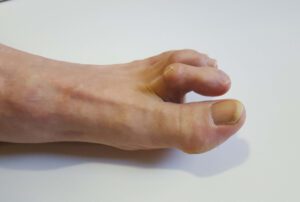
Mallet Toe and Hammer Toe Prevention and Treatment
Proactive measures are recommended to prevent these pathologies, choosing suitable footwear, regularly practicing strengthening and stretching exercises, and being vigilant about early signs of deformation can play a crucial role in preventing these conditions from worsening.
Technological innovations have radically transformed treatments for disorders like mallet toe. Shockwave therapy devices, for example, offer a non-invasive alternative for pain relief and healing. Minimally invasive surgery is another advancement, allowing quicker recovery and fewer complications compared to traditional methods. These technologies provide more effective and comfortable treatment options for patients.
Home treatment may include specific exercises to limber the toes, wearing comfortable and well-fitted shoes, and using orthopedic devices to support and protect the foot. These measures can help relieve pain and prevent worsening symptoms.
Mallet Toe and Hammer Toe Footwear and Trends
Current footwear trends can significantly impact foot health. High heels or narrow shoes, for example, may increase the risk of developing a mallet toe. Awareness of the importance of choosing suitable shoes is therefore essential. Well-fitted shoes, offering adequate support, can not only prevent the development of such conditions but also contribute to better overall foot health.
A podiatrist’s intervention is often necessary for more advanced treatment. This may include prescribing foot orthotics, physiotherapy sessions, injections for pain relief, and in severe cases, surgical intervention. The podiatrist’s evaluation is comprehensive, considering not only the foot’s structure and function but also the patient’s lifestyle and activities.
It’s also important to differentiate mallet toe from claw toe, the latter involving hyperflexion of all toe segments, unlike mallet toe, which is limited to the last segment. This distinction helps refine diagnosis and treatment planning.
Targeted groups for these pathologies vary. Athletes, for example, are particularly susceptible due to repeated stress and pressure on their feet. Elderly people and those whose work requires long periods of standing are also at risk. Understanding these target groups enables the development of specific prevention and treatment strategies for each population.
Prevention plays a key role in managing mallet toe. Awareness programs aiming to educate the public about the importance of suitable footwear choices, healthy lifestyle habits, and early symptom recognition can help reduce the incidence of this disorder. Awareness can also include public health campaigns and educational workshops, helping prevent not only mallet toe but other podiatric disorders as well.
In conclusion, Mallet Toe and Hammer Toe
While common, require in-depth understanding and careful management. From prevention to care, these pathologies underscore the importance of sustained attention to foot health. This text has addressed these conditions in all their aspects, offering an overview of their assessment, treatment, and prevention, aiming to inform and guide the public in managing these frequent but complex foot conditions.
